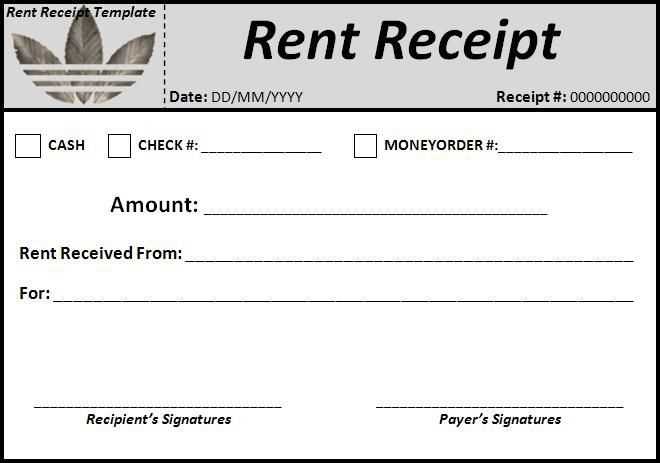
Start by customizing a free rent receipt template to streamline your rental transactions. With a simple layout, it allows both landlords and tenants to document payments clearly. This makes it easier to maintain accurate records and avoid misunderstandings.
Focus on including key details such as the tenant’s name, payment date, amount paid, and rental period covered. These pieces of information provide a straightforward way to track payments. Ensure that the receipt also highlights the property address and the method of payment for clarity.
Choosing a template that is both simple and flexible can save time while keeping everything organized. Whether you’re renting out one unit or several, a free sample rent receipt template gives you the structure you need without any unnecessary complexity.
Here are the revised lines with minimal repetition:
Streamline the rent receipt by removing redundant phrases and simplifying key points. By doing so, the document remains clear and professional, while conveying all necessary details in a concise manner.
| Previous Line | Revised Line |
|---|---|
| Received the rental payment of $500 for the property rent for the month of January, which has been paid in full. | Received full payment of $500 for January rent. |
| The amount of $500 has been received as rent payment for the premises located at 123 Main Street for the month of January. | Received $500 rent for January for the premises at 123 Main Street. |
| The payment of $500 has been acknowledged as full rent payment for the property rented for the duration of the month of January. | Acknowledged $500 rent payment for January. |
By adjusting these lines, we eliminate unnecessary repetition and make the receipt more straightforward. Focus on clarity while retaining all necessary details for accuracy.
- Free Sample Rent Receipt Template
If you’re looking to create a rent receipt, having a template on hand saves time and ensures consistency. A rent receipt should clearly outline the payment details for both the tenant and the landlord. Below is a simple, customizable template for your convenience:
Rent Receipt Template:
Date: [Date of Payment]
Receipt Number: [Unique Number]
Tenant Name: [Tenant’s Full Name]
Landlord Name: [Landlord’s Full Name]
Property Address: [Complete Address of the Rented Property]
Amount Paid: $[Amount]
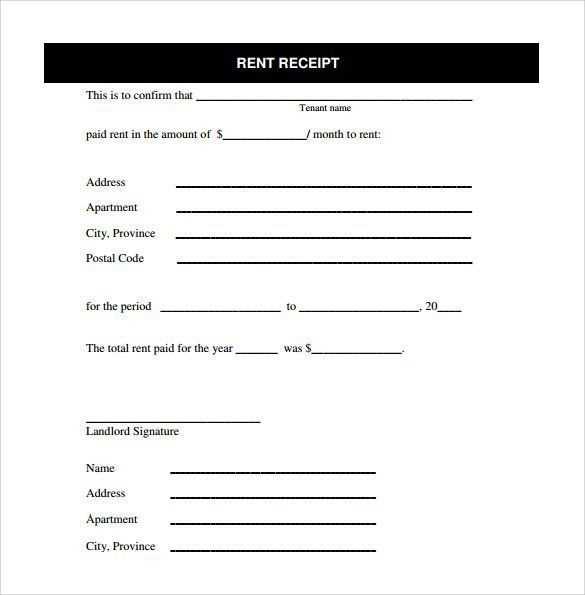
Payment Method: [Cash/Credit/Check/Bank Transfer]
Period of Rent: [Month/Date Range]
Additional Information: [Optional – Any Other Details or Notes]
Signature of Landlord: _____________________
Signature of Tenant (optional): _____________________
Ensure all fields are filled out correctly. This receipt can be adapted to fit any rental agreement by simply adjusting the property, payment details, and terms as necessary.
To personalize your receipt template, adjust the header with your property name, address, and contact information. This ensures tenants can easily identify who issued the receipt. Next, include the rental period, whether it’s weekly, monthly, or another timeframe. Clearly specify the amount paid and due, along with any adjustments, like late fees or discounts.
Include Tenant and Payment Details
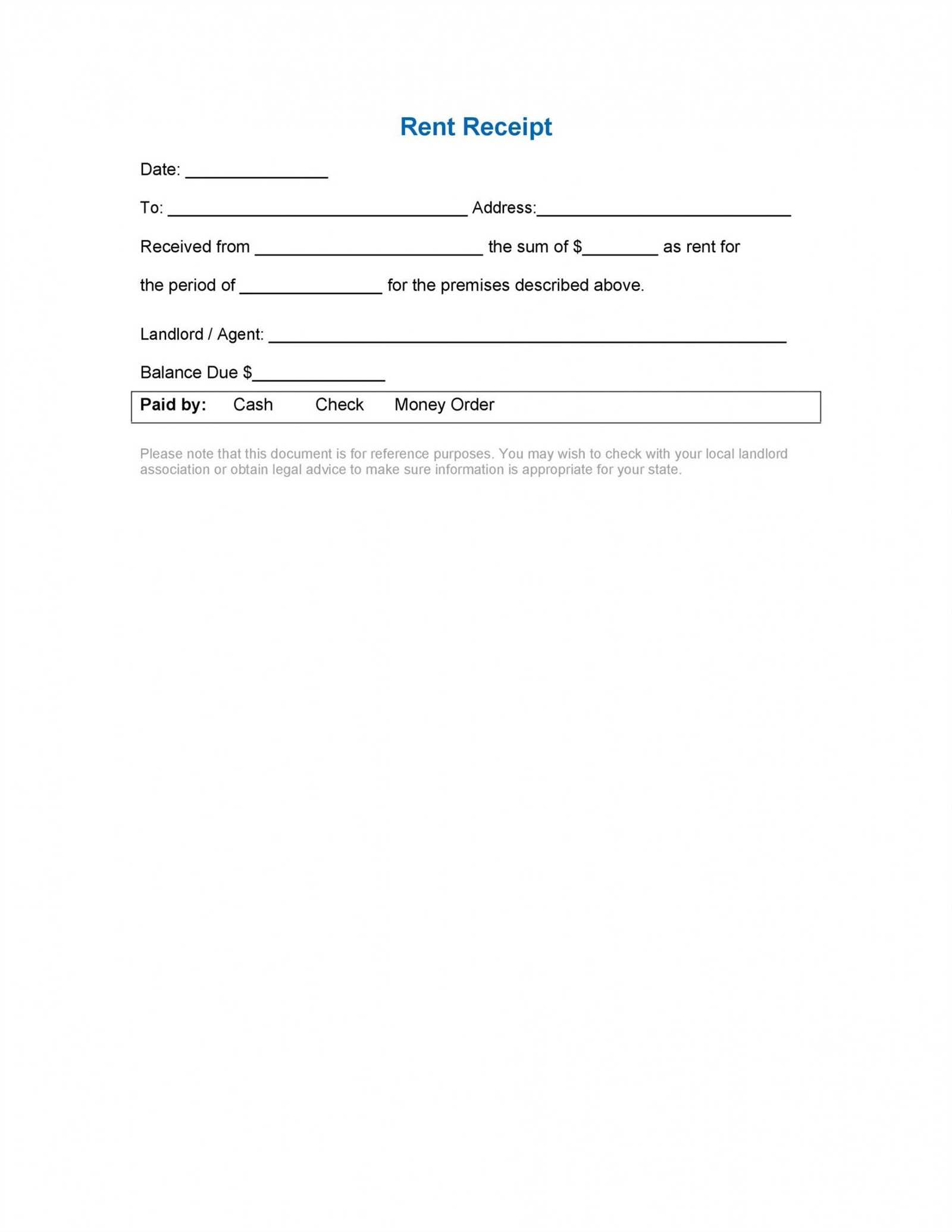
Each receipt should list the tenant’s full name and the payment method used, such as cash, check, or bank transfer. This offers clarity and helps you track transactions. Add a section for transaction details, noting if the payment was for rent only or if it covers additional expenses like utilities or maintenance fees.
Customize for Property-Specific Needs
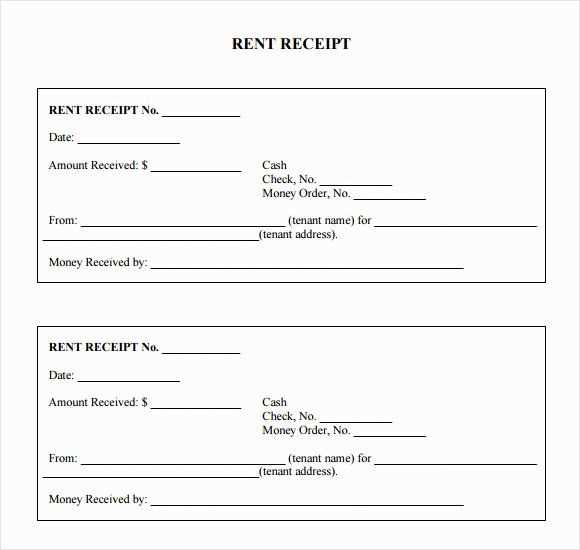
Adjust the layout to fit your property’s style, whether it’s a single-unit home or multiple rental units. If you manage multiple properties, you may want to add a field for the property unit number or address. Keep the template simple but specific to the needs of your rental agreement, ensuring it fits the unique terms of your lease. Make sure the receipt is easy to read and includes all necessary details without cluttering the page.
Ensure all details on the receipt are accurate, including the names, dates, amounts, and transaction descriptions. Failing to provide correct information can lead to legal disputes or confusion. Avoid using template language that could mislead parties about the nature of the transaction.
Always check if the template includes clear disclaimers regarding the usage of the receipt. It’s important to specify whether the receipt is for personal, business, or tax-related purposes, as this will impact its legal standing. Misclassification of the receipt could lead to compliance issues down the line.
Be aware of local regulations surrounding transaction documentation. Some jurisdictions may require receipts to contain specific wording, such as tax identification numbers or business licenses. Verify that your template aligns with the required legal standards to prevent future complications.
If using a receipt for a rental or lease agreement, ensure the template reflects terms and conditions that match the actual contract. A receipt that does not match the agreed-upon terms may be disputed in court or may not hold up as valid proof of payment.
Keep a record of all receipts issued, including electronic versions, to prevent any legal disputes. Tracking receipts not only helps in case of refunds or audits but also protects both parties if any discrepancies arise regarding payments made or services rendered.
Store receipts in a secure, organized manner. Create a designated folder on your computer or cloud service for each tenant. This ensures easy access and proper documentation, reducing the risk of losing important information. For physical copies, use labeled envelopes or filing cabinets that are clearly sorted by tenant and date.
Use Clear File Naming Conventions
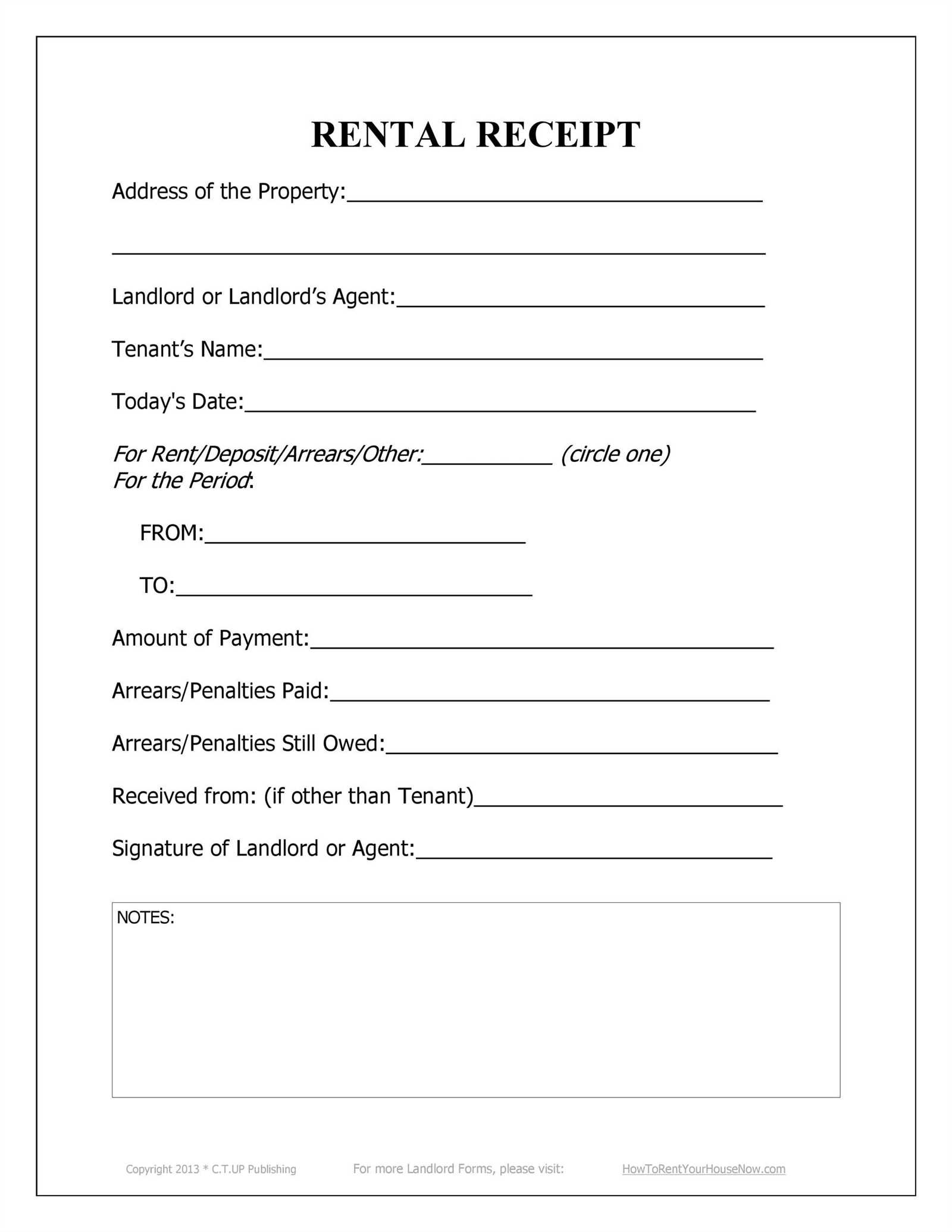
Adopt a consistent file naming system, such as “TenantName_ReceiptDate_Amount.” This will make it simple to locate receipts quickly. For example, a receipt for tenant “John Doe” on January 1, 2025, would be named “JohnDoe_2025-01-01_100”. This reduces confusion and makes the retrieval process smooth.
Share Receipts Promptly and Securely
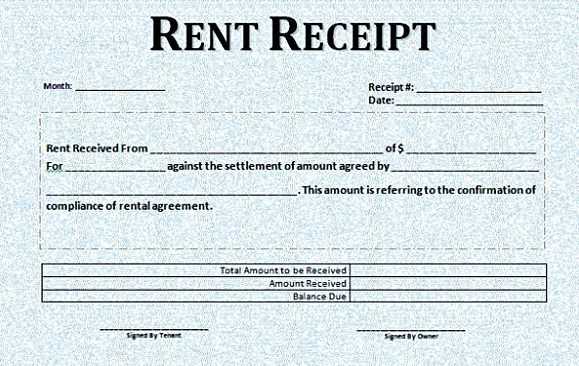
When sharing receipts with tenants, use secure methods like encrypted email or cloud storage services with password protection. Avoid sending receipts via unsecured text messages or social media platforms. Always notify tenants of the shared document and offer clear instructions on how to access it.
To create a rent receipt template that suits your needs, focus on key details to ensure clarity and accuracy. Follow these steps:
- Specify the Landlord and Tenant Information: Include full names, contact information, and addresses of both parties. This avoids confusion in the event of a dispute.
- Include Property Details: Clearly state the address of the rental property, ensuring it matches the lease agreement.
- State the Payment Amount: List the rent amount paid and the method of payment (e.g., cash, check, or online transfer). This transparency helps track financial transactions.
- Mention the Payment Date: Include the date the payment was made to validate the transaction. This is essential for record-keeping and future references.
- Signatures: Both parties should sign the receipt, confirming the transaction was completed. This adds an extra layer of legitimacy.
By following these steps, you create a straightforward, functional receipt template that protects both landlord and tenant.


